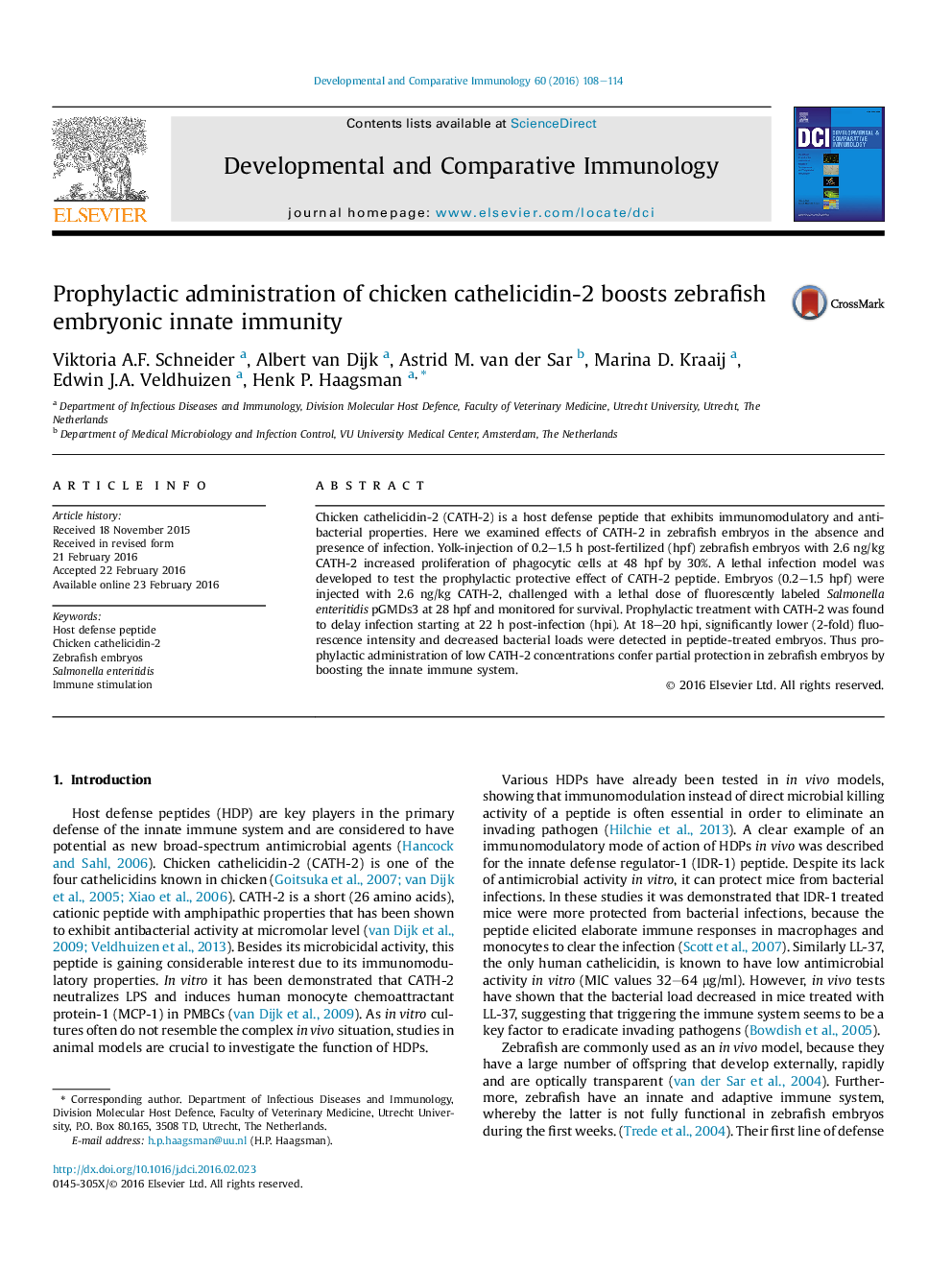| Article ID | Journal | Published Year | Pages | File Type |
|---|---|---|---|---|
| 2428804 | Developmental & Comparative Immunology | 2016 | 7 Pages |
•An experimental prophylaxis-infection model was established in zebrafish.•Yolk-injection of CATH-2 enhances proliferation of phagocytes in zebrafish embryos.•CATH-2 pre-injection partially protects Salmonella-infected zebrafish embryos.
Chicken cathelicidin-2 (CATH-2) is a host defense peptide that exhibits immunomodulatory and antibacterial properties. Here we examined effects of CATH-2 in zebrafish embryos in the absence and presence of infection. Yolk-injection of 0.2–1.5 h post-fertilized (hpf) zebrafish embryos with 2.6 ng/kg CATH-2 increased proliferation of phagocytic cells at 48 hpf by 30%. A lethal infection model was developed to test the prophylactic protective effect of CATH-2 peptide. Embryos (0.2–1.5 hpf) were injected with 2.6 ng/kg CATH-2, challenged with a lethal dose of fluorescently labeled Salmonella enteritidis pGMDs3 at 28 hpf and monitored for survival. Prophylactic treatment with CATH-2 was found to delay infection starting at 22 h post-infection (hpi). At 18–20 hpi, significantly lower (2-fold) fluorescence intensity and decreased bacterial loads were detected in peptide-treated embryos. Thus prophylactic administration of low CATH-2 concentrations confer partial protection in zebrafish embryos by boosting the innate immune system.
